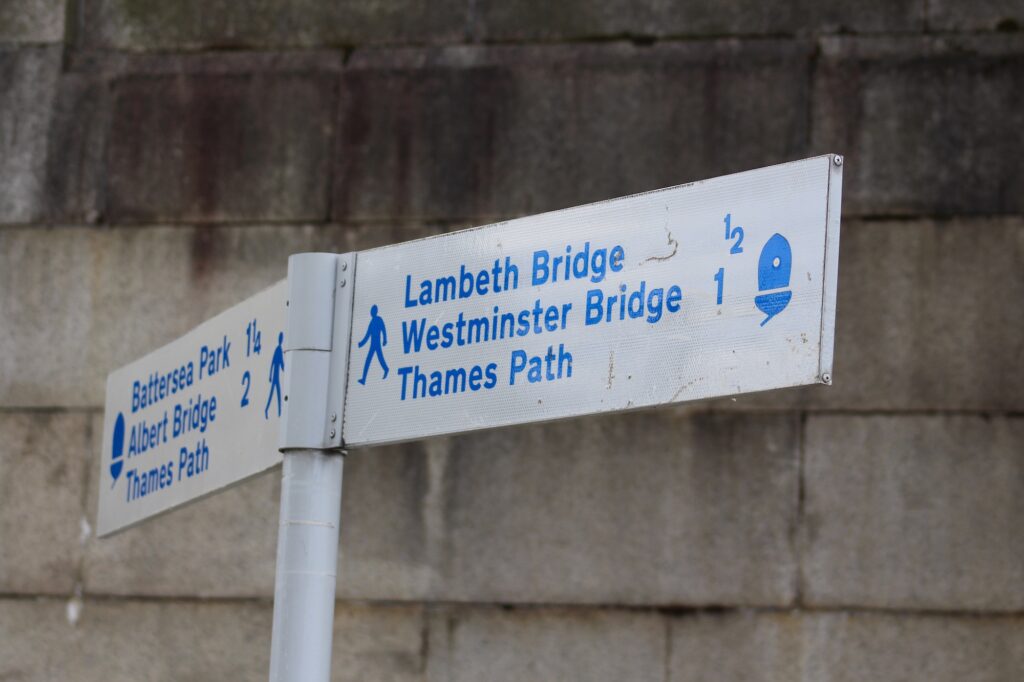
This section of the Thames Path, having been closed for a while during the ten years needed by Tideway to build London’s *Super Sewer*, was finally re-opened in May this year. And not only was the path re-opened but London gained two new public spaces by the River Thames: Effra Quay and the Isle of Effra.
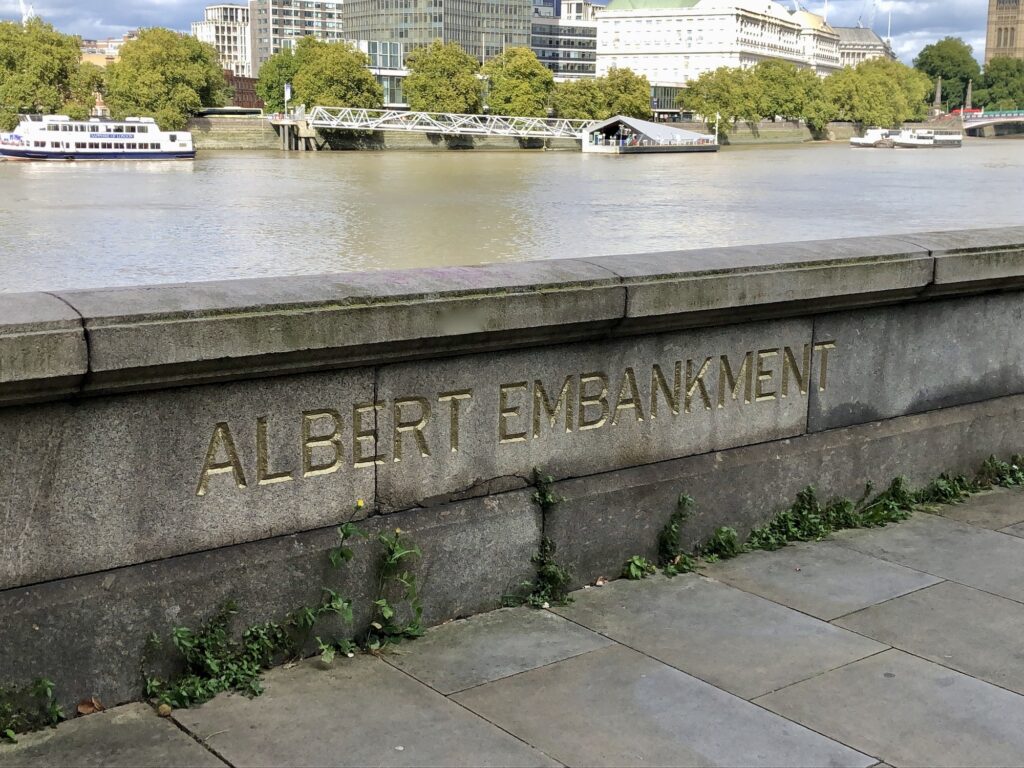
Running along the south bank of the River Thames, the Albert Embankment has long been on the route of the Thames Path.
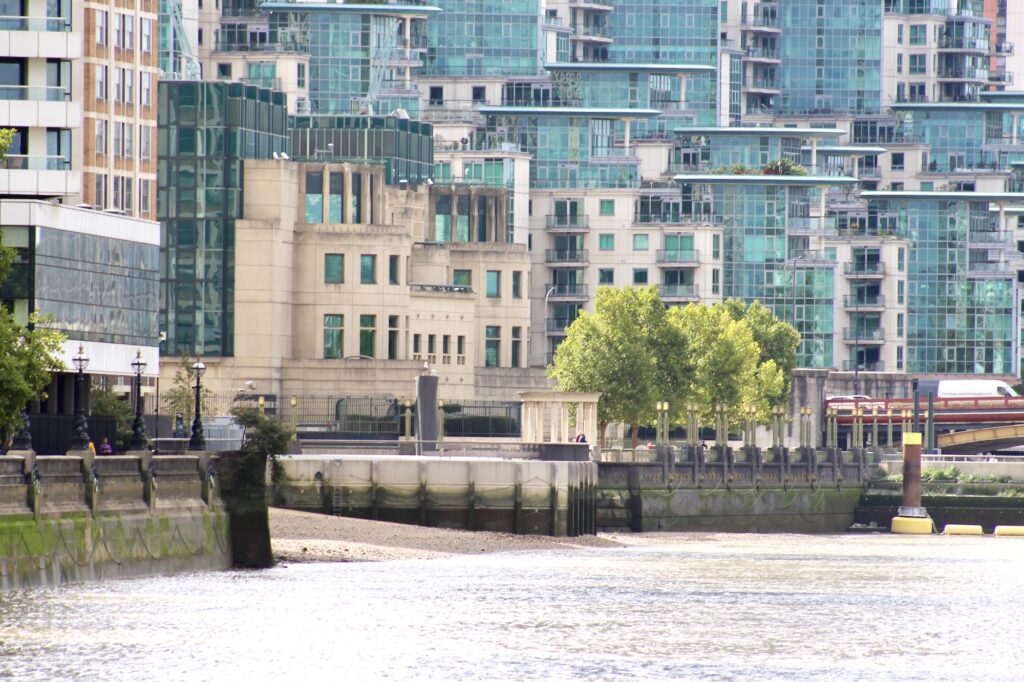
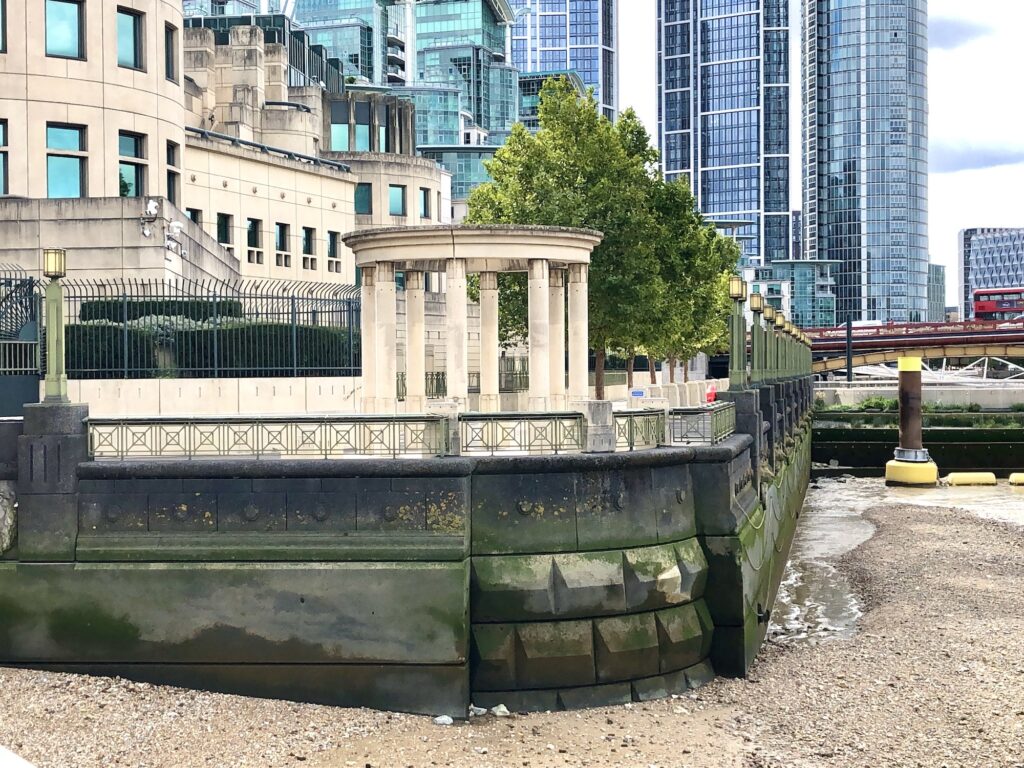
Architect of the striking MI6 building, Sir Terence Farrell*, writes that it was “deliberately designed to make the building a landmark object in its own right […] The ornament comprises an assembly of components that are themselves miniature parts of buildings – including a miniature of the whole building itself.” One of the ornaments that certainly fits that description is the classical colonnade that stands on the riverside with views of the Thames both downstream and upstream.
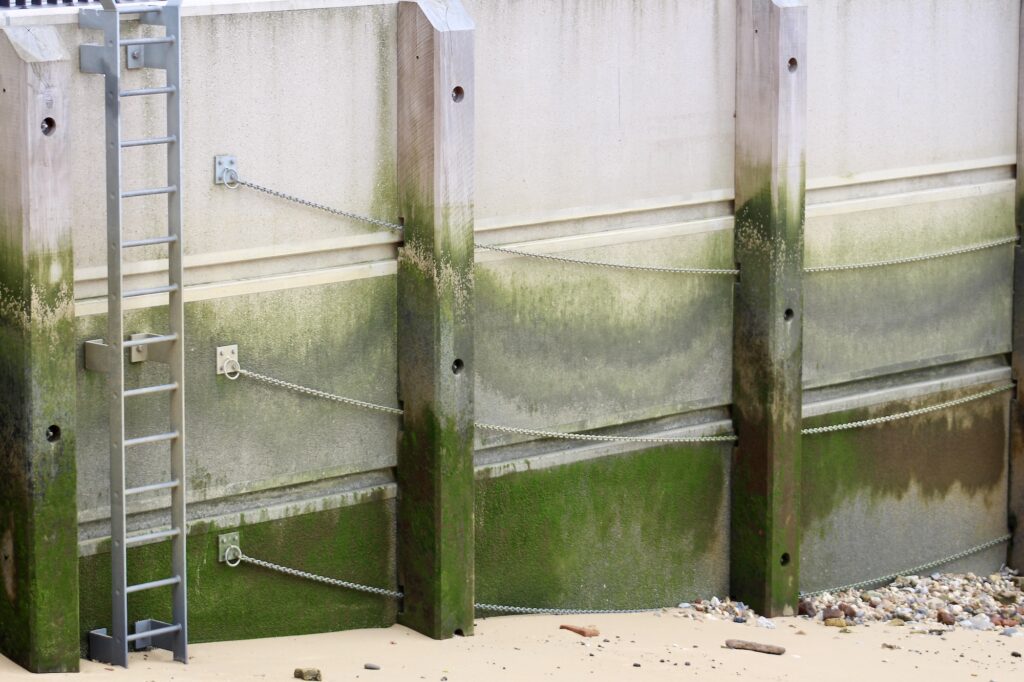
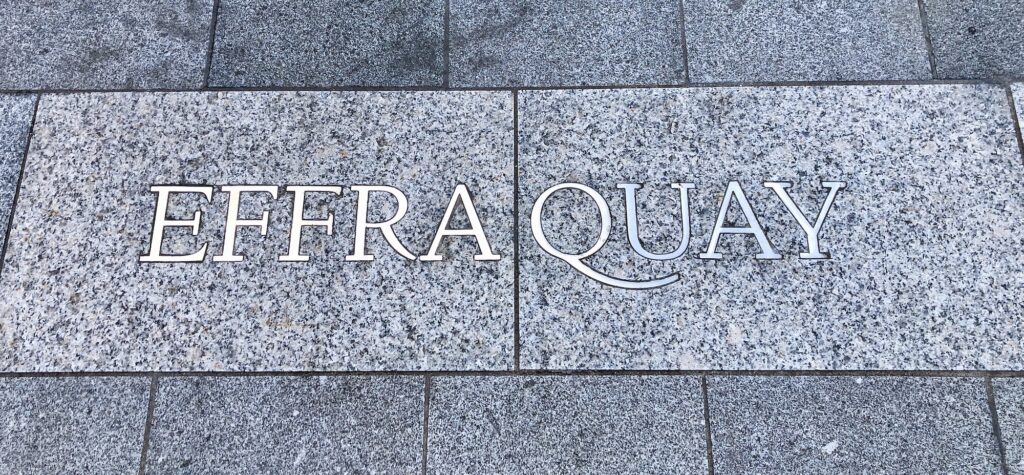
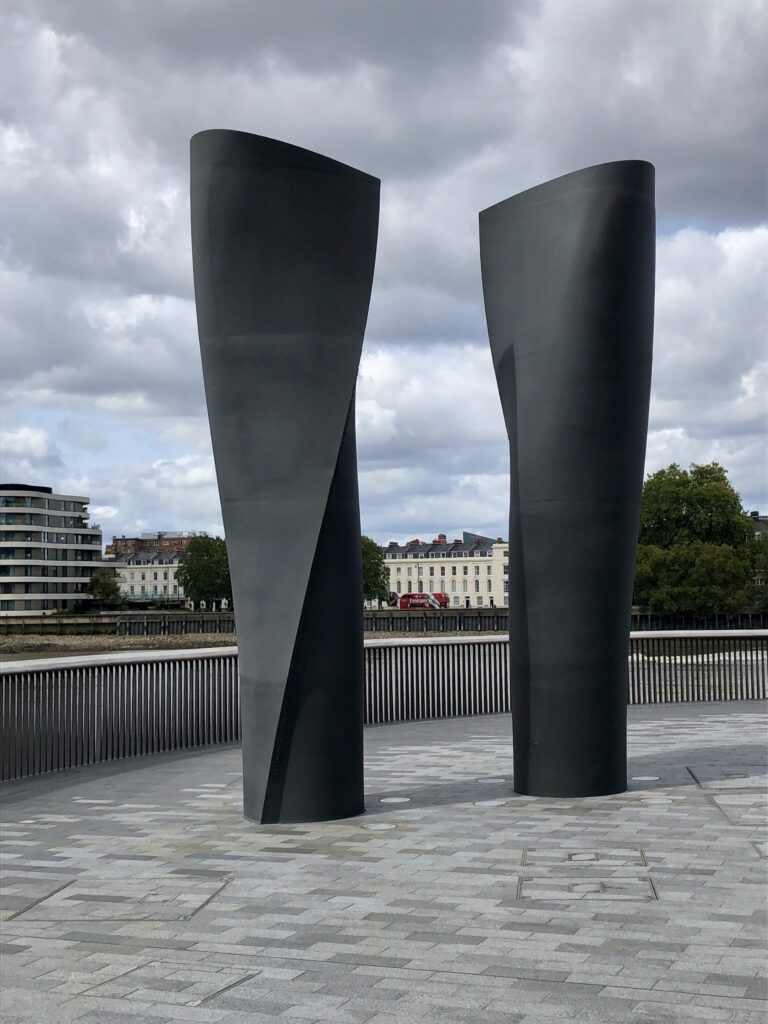
The two five metre high Tideway tunnel ventilation columns on Effra Quay are not only functional and sculptural in form, they are also inscribed with newly commissioned poems, as are the nineteen ventilation columns the length of the Tideway project. Poet Dorothea Smartt was commissioned to write a series of texts for nine of the Thames Tideway sites called ‘Hidden Rivers, Hidden Time’ including here at Effra Quay. Her poems, all carefully researched so as to link them to each location, are on the theme of London’s ‘Lost Rivers’. The only constraint: “They had to be short and easily readable up the side of the column.”
Inspired by a “legend that a coffin from West Norwood Cemetery sank into the river and drifted downstream into the Thames”, her poem on one of the ventilation shafts here reads:
“River Effra stubbornly underground, resurrects a coffin, sends it bobbing down the Thames. The dead will not stay buried in its persistent spring.”
The shafts are designed with a lifespan of 120 years so that they, and their inscriptions, now form “a significant part of Tideway’s cultural legacy for London”.
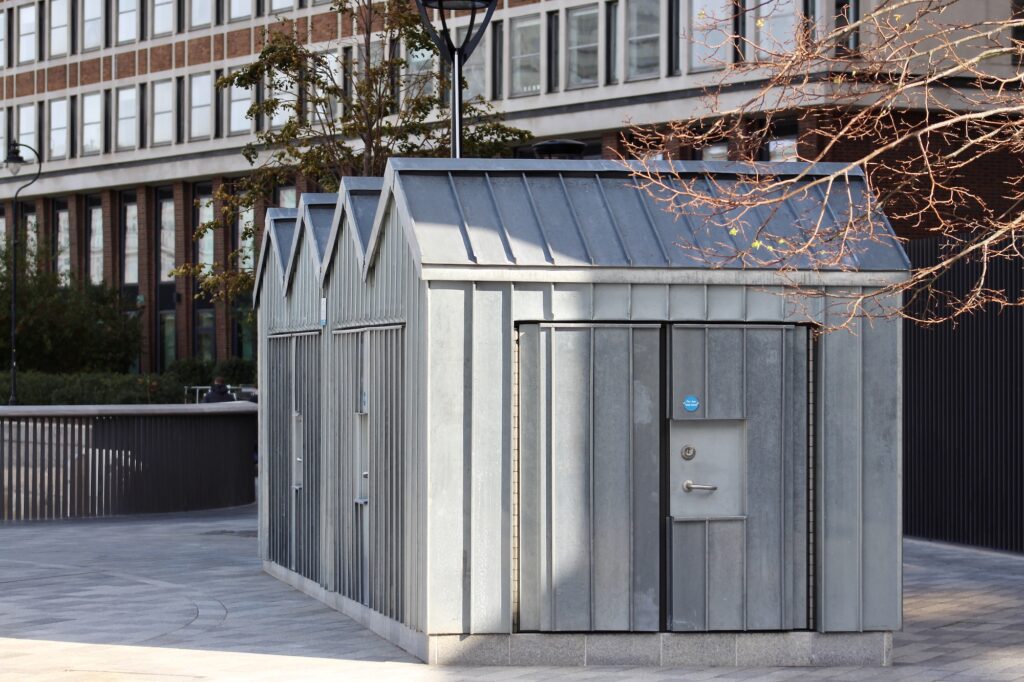
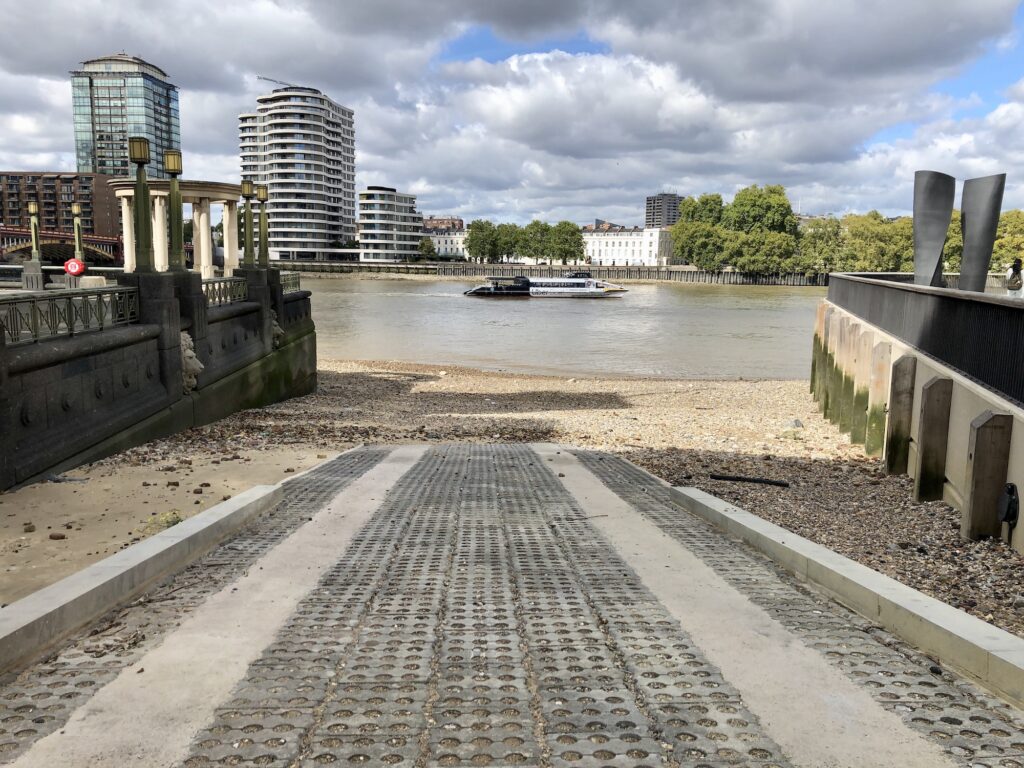
This stretch of the foreshore below the slipway has a long history dating back six thousand years. There was much excitement when timbers and stakes were discovered during a particularly low spring tide and subsequently carbon dated to the Mesolithic period by a team from the Thames Discovery Programme. News was only released to the public in 2010 when research had been completed.
In the more recent past, from the mid-17th century, until 1816, when the first Vauxhall Bridge was opened, Lack’s Dock was the main river access to the nearby Vauxhall Pleasure Gardens. From 2002 until the slipway was closed in 2017 for work on the Tideway sewer, the bright, yellow painted, ex-military, DUKW amphibian landing craft, known as ‘Ducks’, used to take to the river here for part of their London Duck Tours.
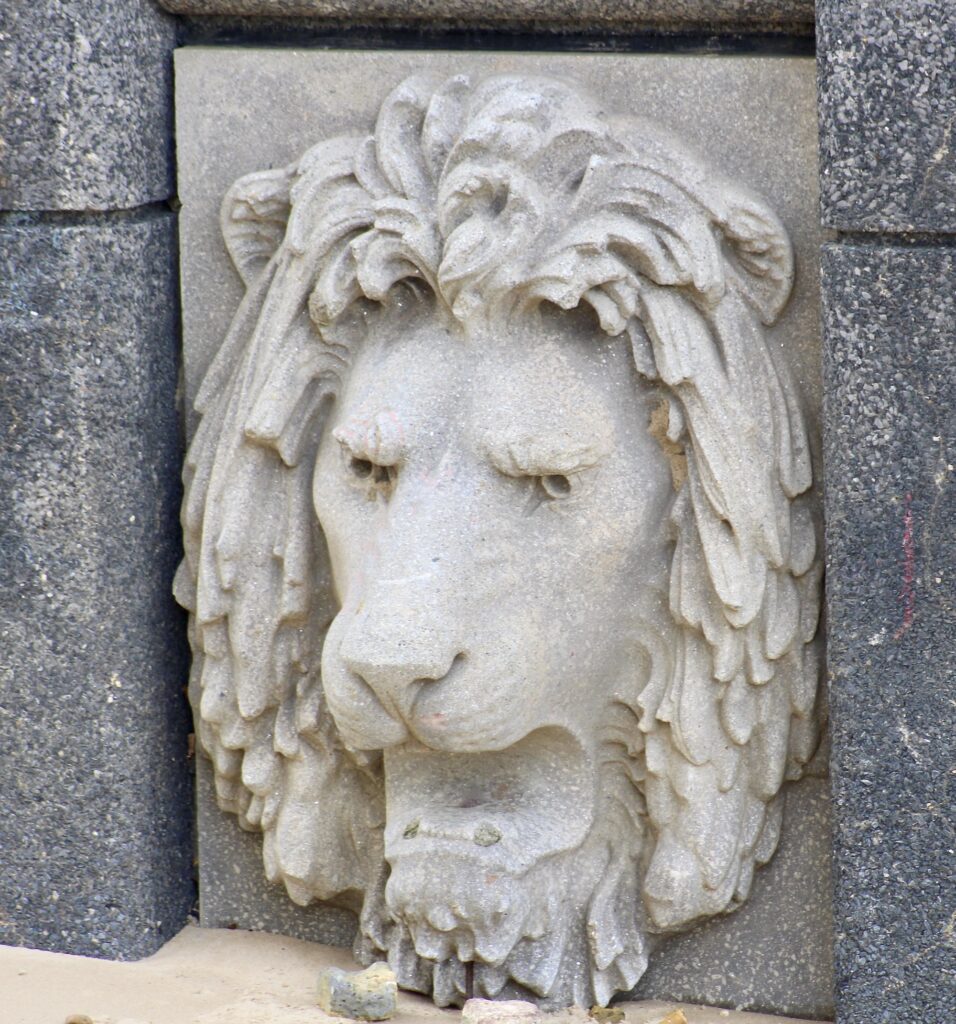
There are three sculpted stone lion heads on the MI6 wall of Effra Quay, complementing the older, bronze lion heads on their river-facing wall. These are, as are the lion heads along much of the central London Thames, each holding a ring in their mouth.
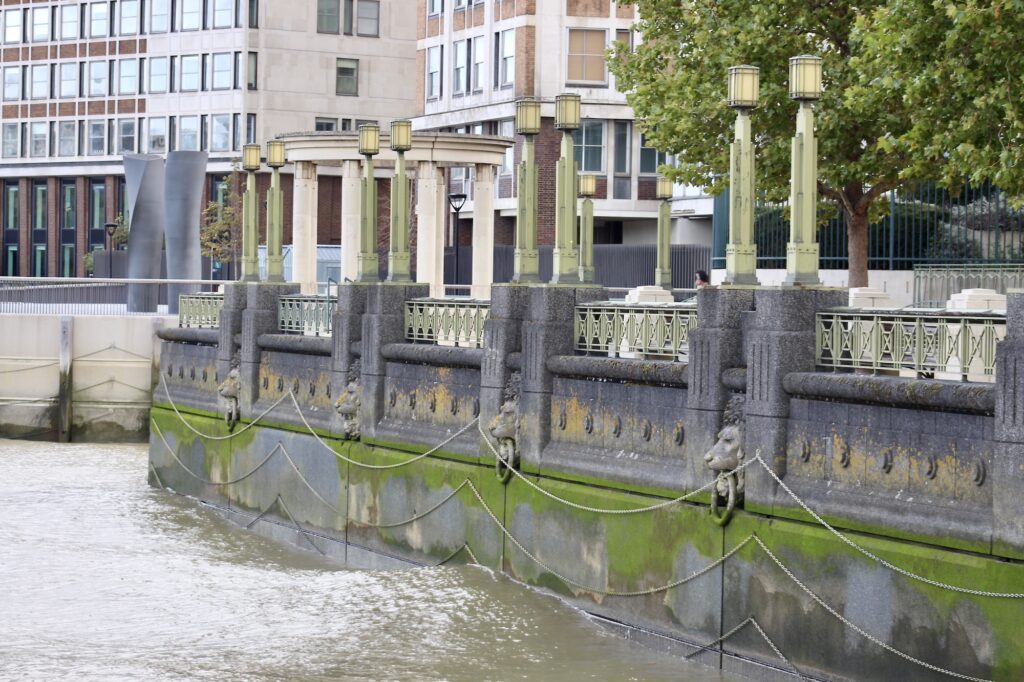
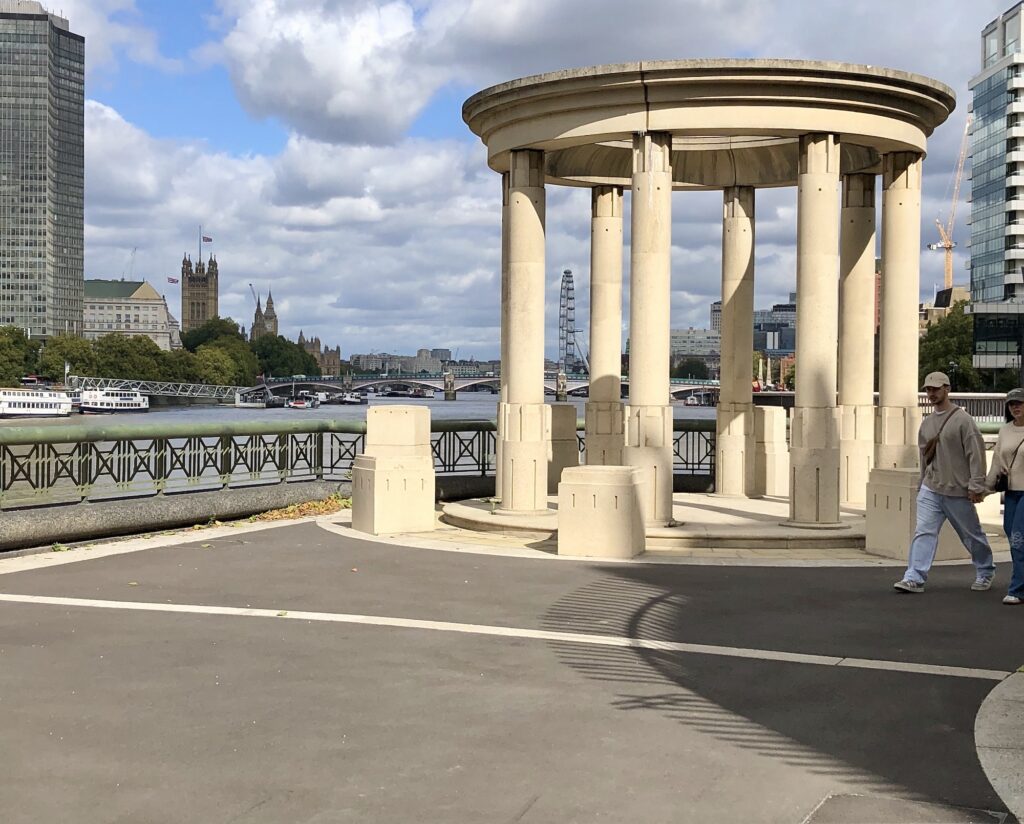
Passers-by are often puzzled as to the purpose of this colonnade. Yet tempting though it is to imagine something more, it fits into the broad concepts of postmodernism and is purely decorative.
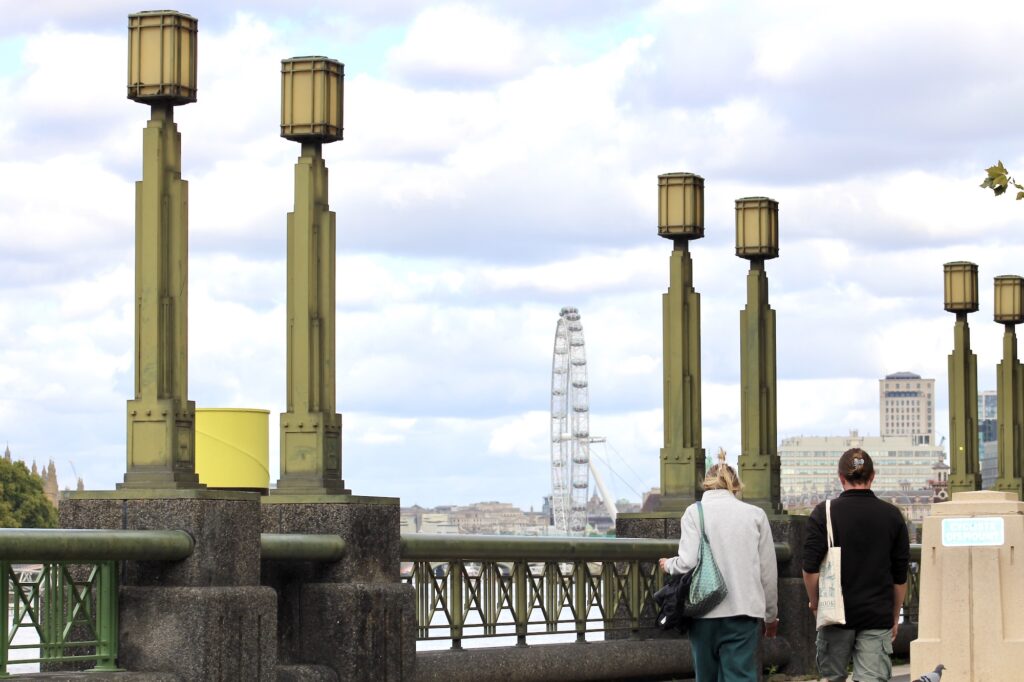
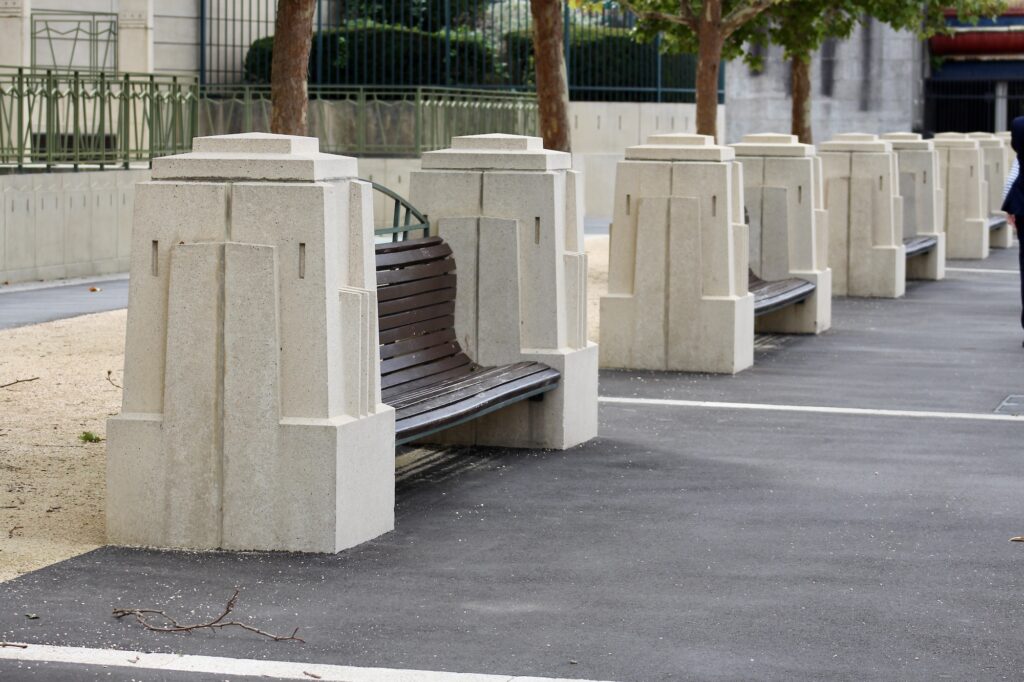
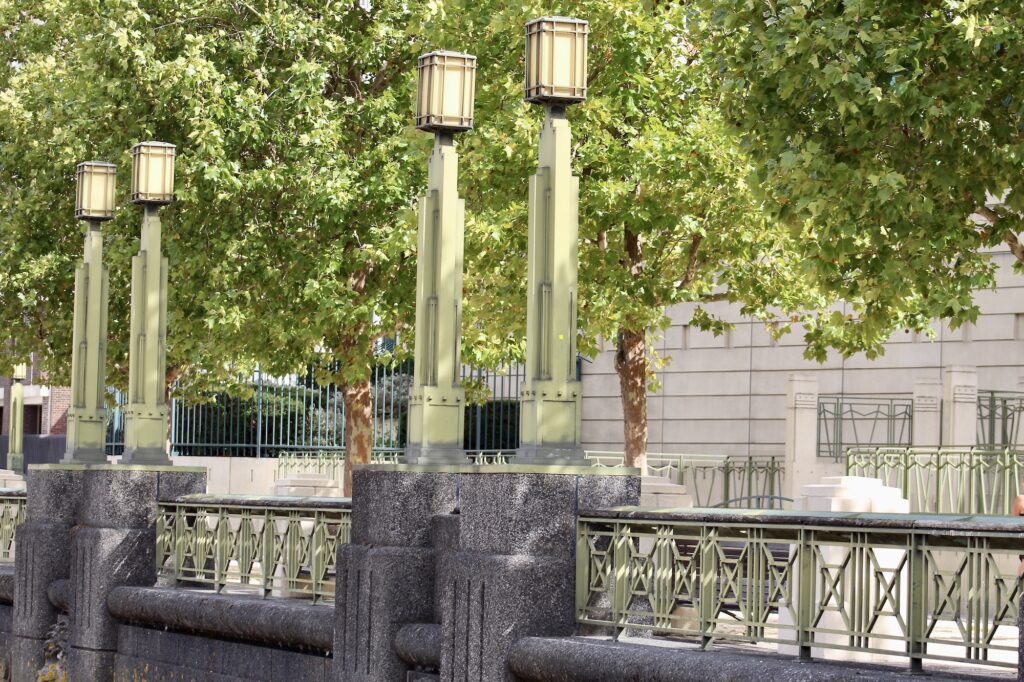
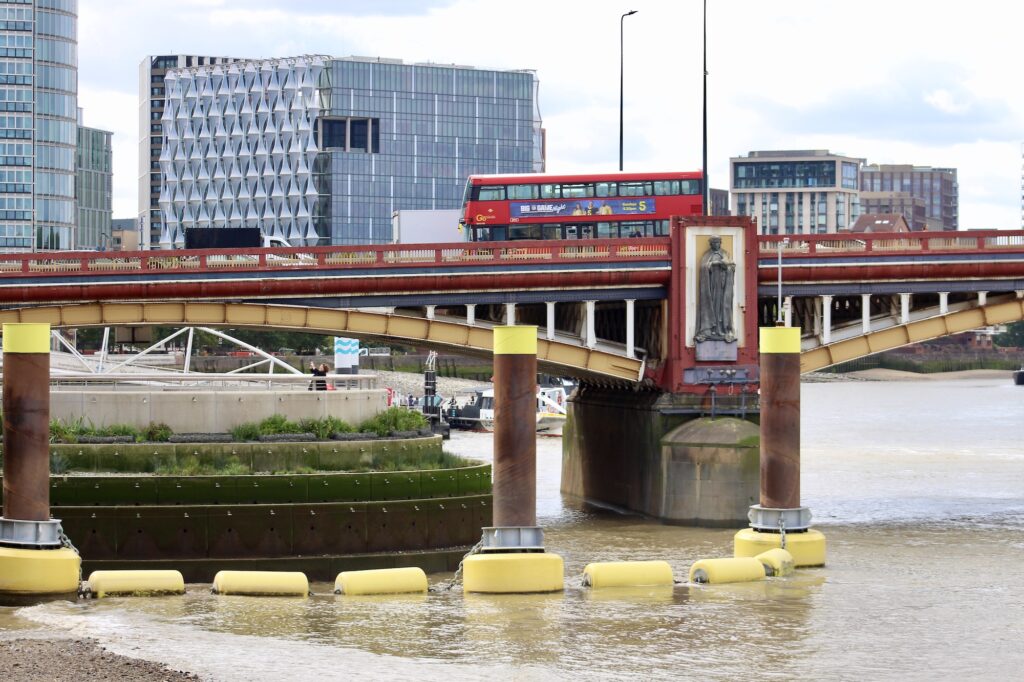
With healthier water in the Thames now, more than a dozen species of marine plants – including rushes, sedges and grasses – have been planted in specially constructed beds either side of Vauxhall Bridge to take advantage of this..
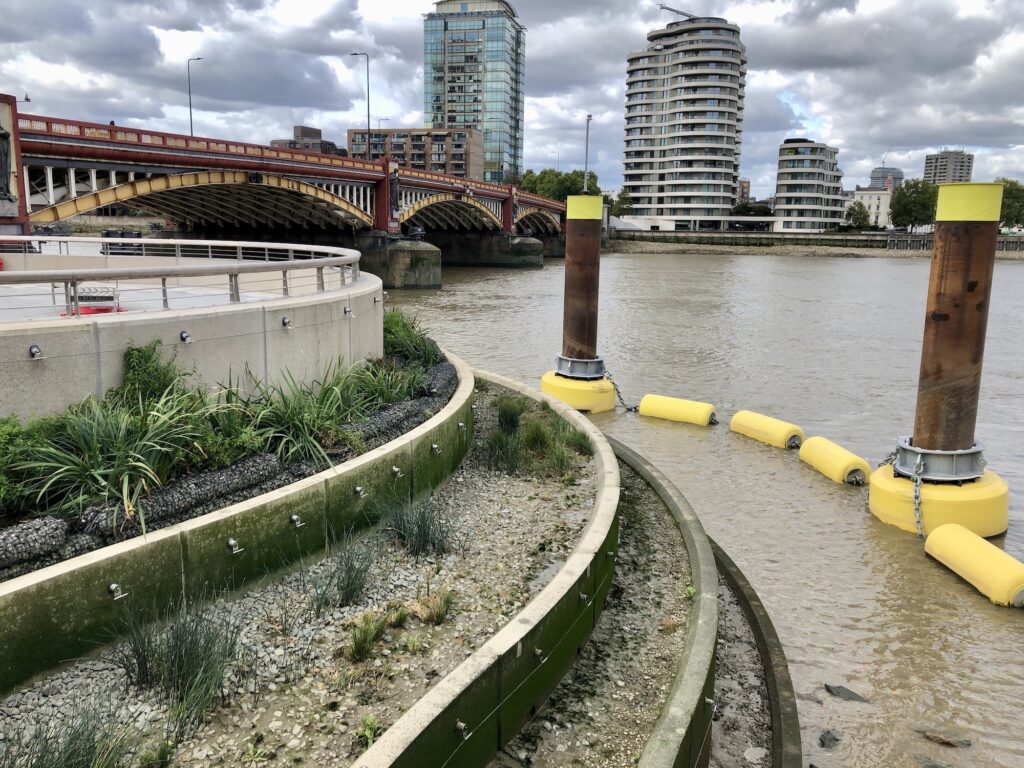
Protected by a floating barrier, the Isle of Effra’s plants are beginning to take root on this cleverly designed intertidal structure, which aims to make use, as far as possible, of the different tidal levels. The fourth rather muddy level, might well attract some of the shellfish now found on central London foreshores and thereby bring in the gulls and crows that feed on them.
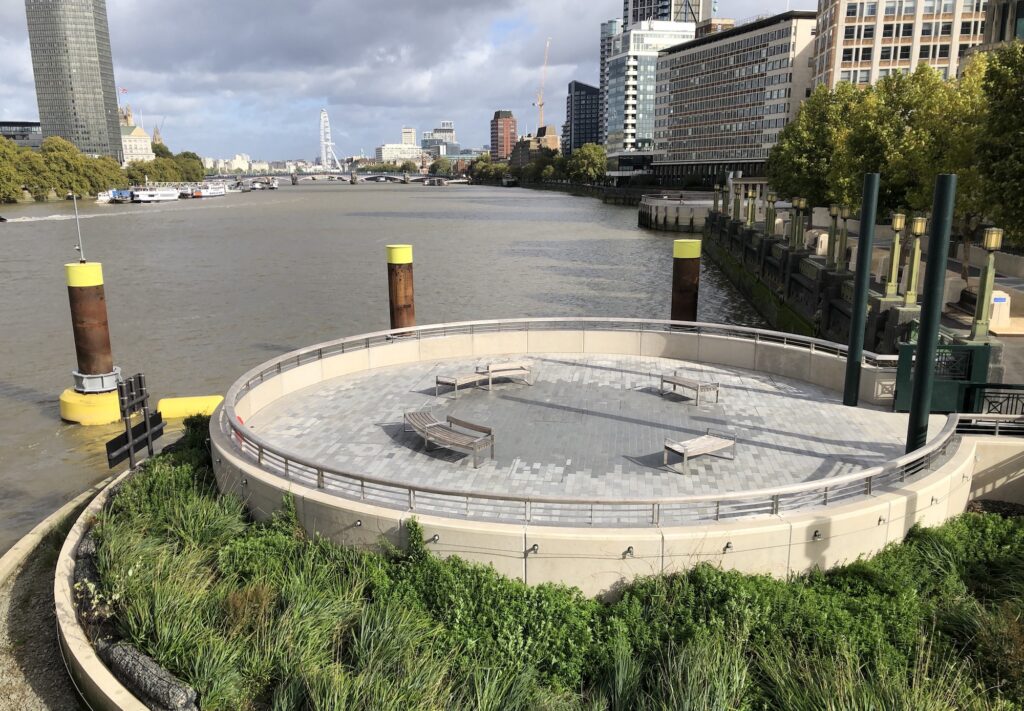
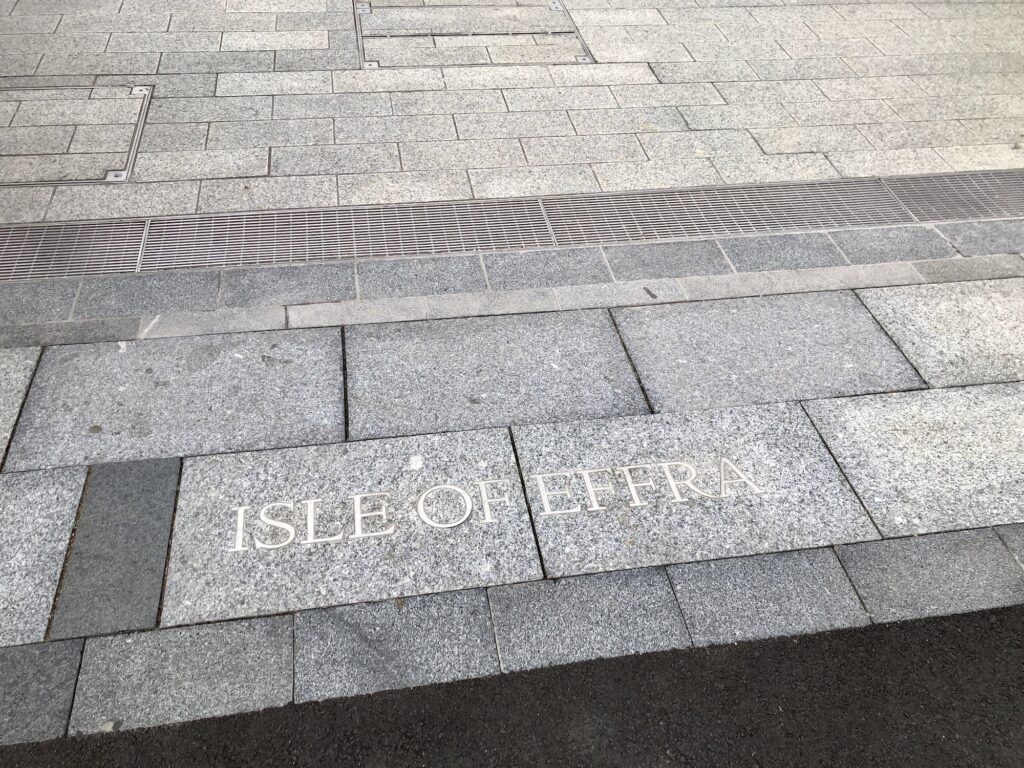
The fine grey granite used for the paving not only pays homage to the Lost River Effra set in darker stone, it also marks its link with the Super Sewer with darker granite in the middle of the Isle tracing the 16 metre-diameter shaft beneath that was used in the construction of the new sewer.
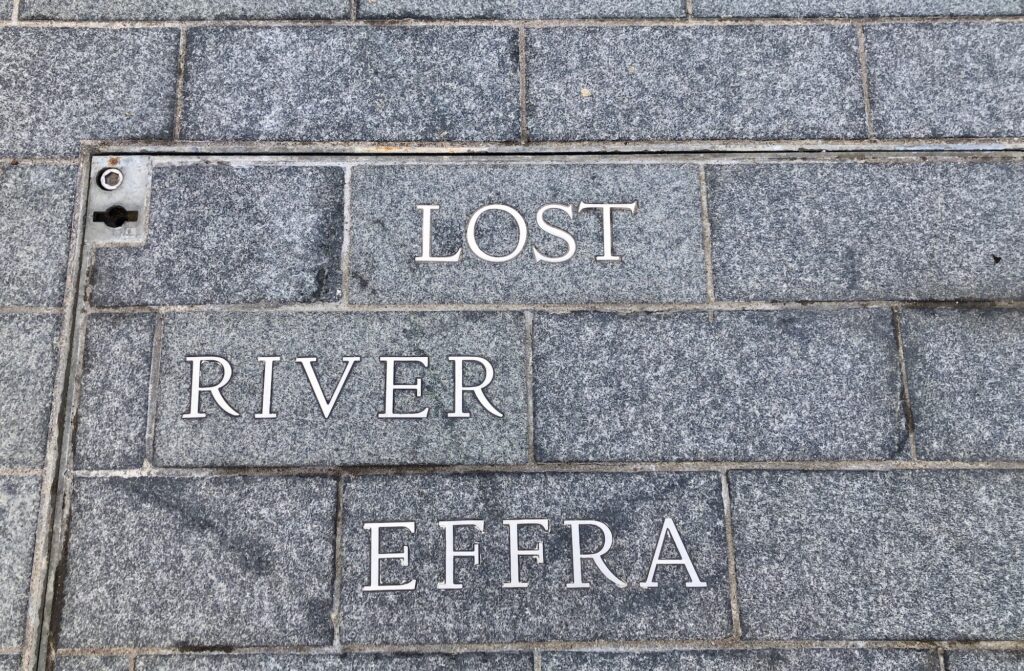
Paul Talling, author of London’s Lost Rivers explains that: “The Effra was covered over as a sewer in the mid-1800s.” By 1865 it was incorporated into Joseph Bazalgette’s new sewer system for London. However, despite being hidden, it was still susceptible to flooding. An article in Thames 21 describes how “In 1914 during a heavy storm, the sewer overflowed, flooding houses and forcing residents to evacuate their homes for several days. In 1935 the sewer was enlarged to avoid more floods.”
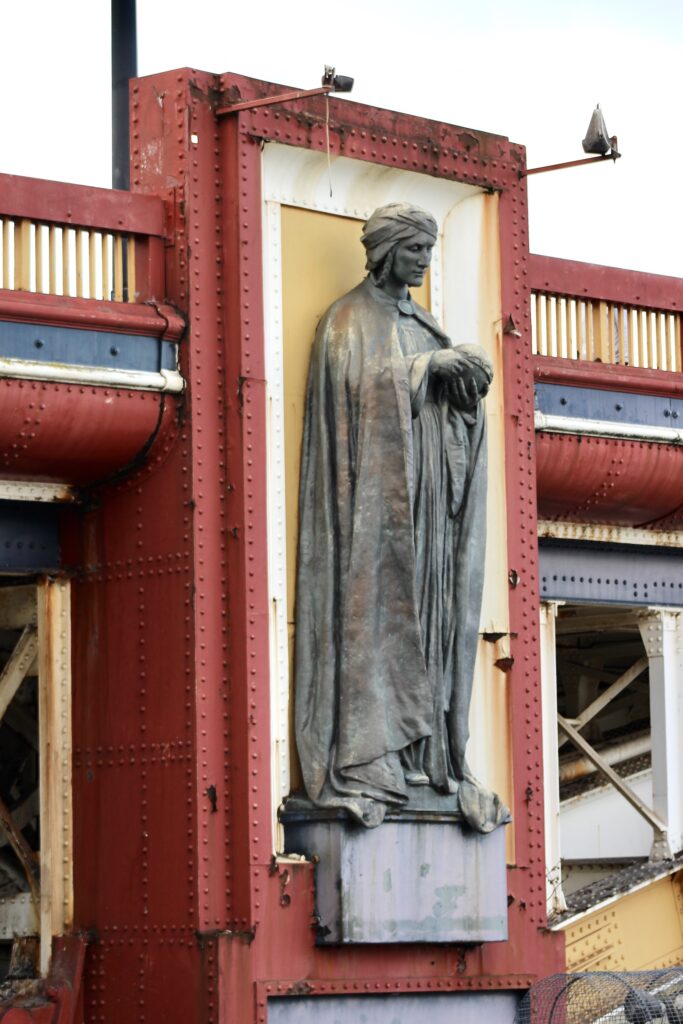
The Isle of Effra, extending as it does out into the River Thames gives, as I mentioned above, new and interesting views of riverside London in both directions. One of these is a closer view of the downstream Vauxhall Bridge Statues, a real work of art, hidden from road traffic passing on the bridge above and difficult to see from a passing boat.
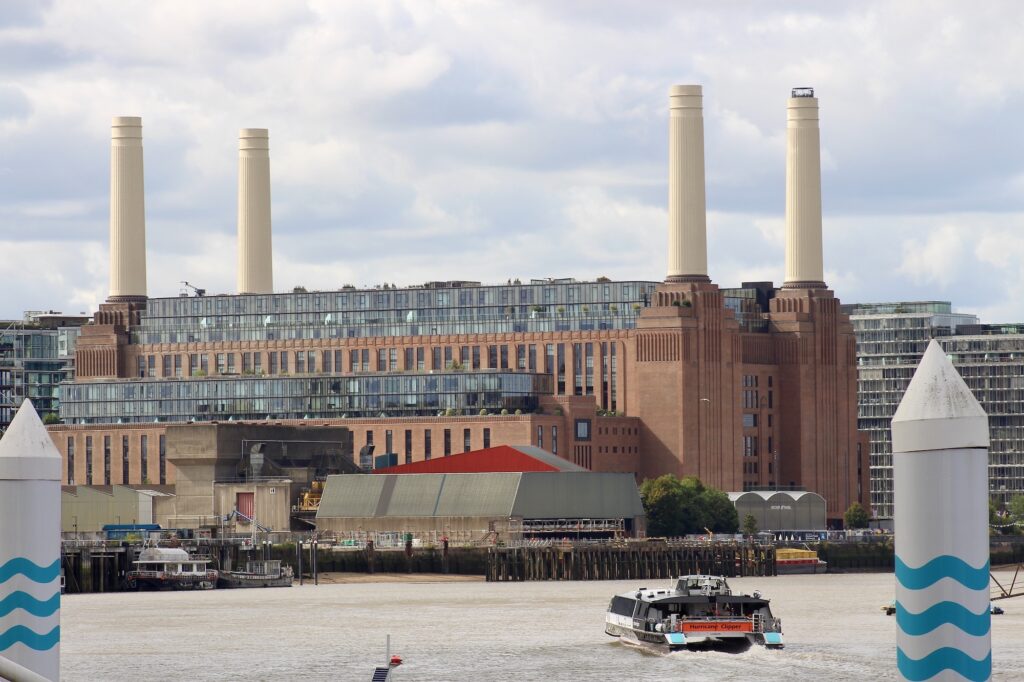
The construction of the Tideway Super Sewer seems to have been a model of careful planning, budgeting, and efficiency, set back only a little by covid. “The first sewage flowed into the tunnel in September 2024. It became fully operational in February 2025, and was officially opened by King Charles in May 2025.” Not only has the new sewer immediately improved the quality of the water in the River Thames, Tideway has added seven new riverside spaces for the public to enjoy including Effra Quay and the Isle of Effra, both now accessible to all with the re-opening of the Thames Path.
Sources and Further Information
Brixton Buzz, Article by Mike Urban: The Isle of Effra and Effra Quay…
Farrells: Architecture Today ‘Post-Postmodern…’
Hidden Rivers, Hidden Times: Permanent Poetry Commission, Dorothea Smartt FRSLLeigh Hatts: Vauxhall Path Reopens
SIS Secret Intelligence Service , MI6 History
Tideway: Effra Quay & Isle of Effra
Thames 21: ‘The River Effra’
The Thames Path
Paul Talling: London’s Lost Rivers
Vauxhall History
Short film walking the reopened Thames Path by Vauxhall
——————————————
*Sir Terrence Farrell died on September 28, 2025. See Tribute by RIBA President, Chris Williamson.